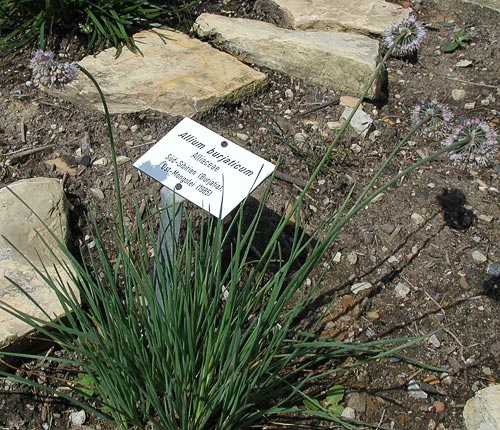Relatives
Allium burjaticum Friesen - Buryat onion.
Taxonomic position.
Family Alliaceae J.Agardh, genus Allium L.Synonymy.
Allium senescens auct.non L.Morphology and biology.
Perennial. Geophyte. Bulbous. Bulbs conical with brown scarious tunics, often with violet tinge, arranged in several (3-10) groups on creeping rhizome, root beards white. Stems 15-20(25) cm tall, cylindrical. Leaves condensed at the stem base, nearly as long as the stem, narrow, flat, spirally twisted. Umbel many-flowered, dense, semiglobose or globose. Pedicels equal to each other, 1.5-2 times as long as tepals. Tepals broadly ovate, acutish, pink or whitish-pink, with darker vein. Filaments 1.5 times as long as tepals, subulate, entire, inner ones slightly wider than outer ones. Style protuding from the perianth. Autochore. Flowers in June, fruits in August. 2n=32.Distribution.
Siberia (Tuva, Buryatia, southern Chita Region), Mongolia (the Selenga River basin).Ecology.
Xerophyte. Light-loving. On steppe stony slopes, in steppified pine forests, on sand.Use and economic value.
Wild relative of cultivated onions.References:
Friesen NV. 1988. Onion plants of Siberia. Novosibirsk: Nauka. P.111. (In Russian).Malyshev LI., Peshkova GA., ed. 1987. Flora of Siberia. V.4. Araceae - Orchidaceae. P.68. (In Russian).
Vvedensky AI. 1935. Onion . Allium L. In: Komarov VL., ed. Flora URSS. V.4. Moscow; Leningrad: AN SSSR. P. 164. (In Russian).


